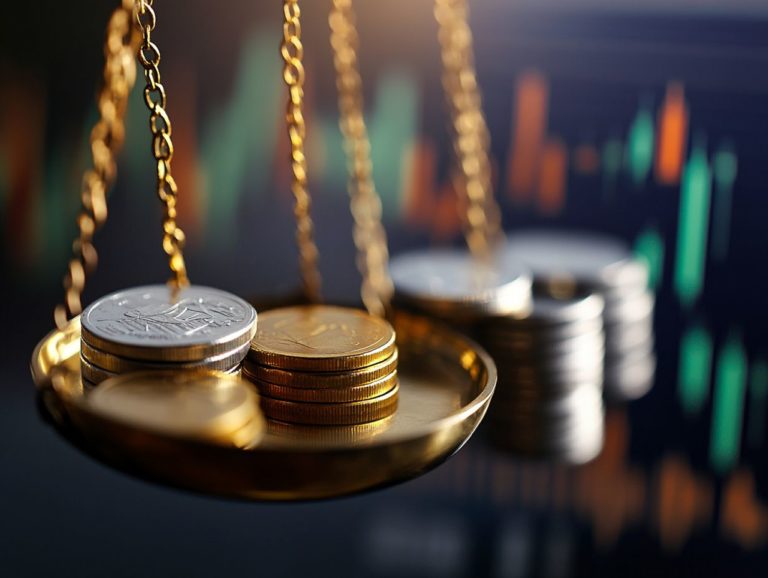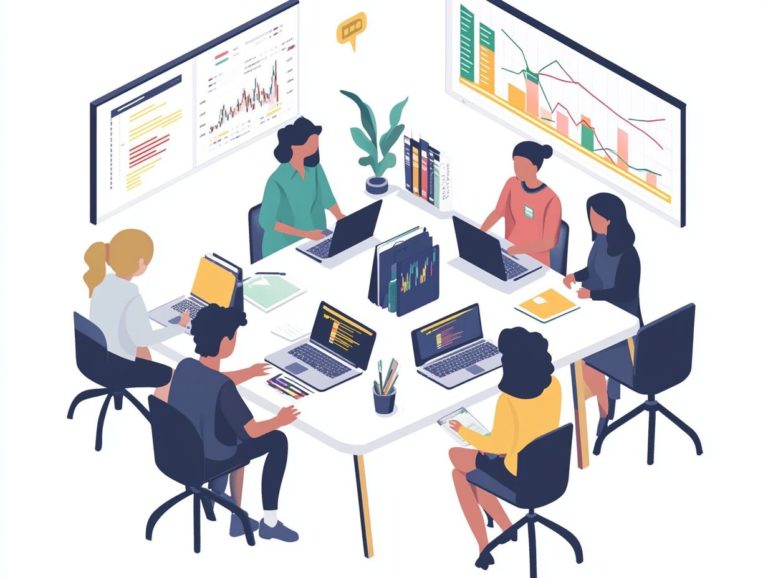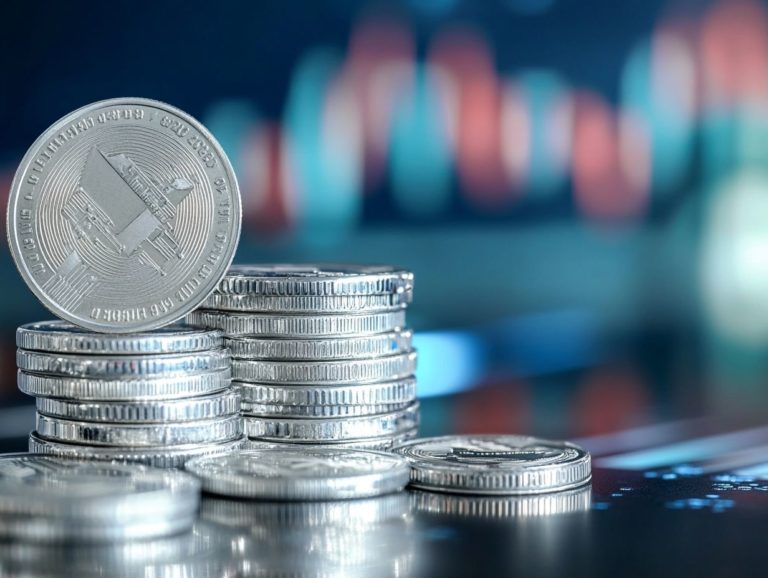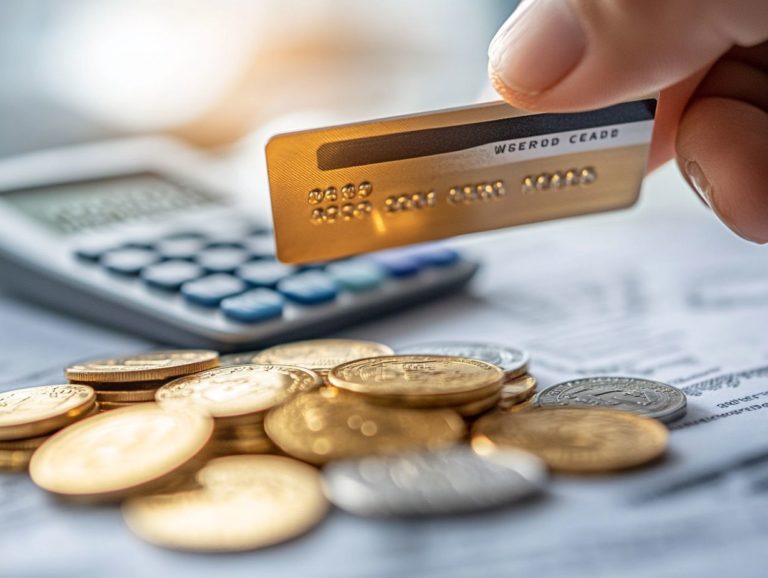10 Factors Influencing Precious Metals Prices
Understanding the dynamics behind precious metals prices can be captivating and crucial for you as an investor.
This article highlights ten key factors that influence these prices. These range from the basic laws of supply and demand to the effects of geopolitical tensions and market speculation.
You’ll discover how economic indicators like interest rates and inflation play a significant role in precious metals.
Whether you re a seasoned investor or just curious, you’ll find valuable insights to help you navigate this market.
Join us as we unpack the factors that can sway these coveted assets!
Contents
- Key Takeaways:
- 1. Supply and Demand
- 2. Economic and Political Factors
- 3. Interest Rates and Inflation
- 4. Currency Exchange Rates
- 5. Geopolitical Tensions
- 6. Market Speculation
- 7. Industrial Demand
- 8. Central Bank Policies
- 9. Technological Advancements
- 10. Seasonal Demand
- How Do Precious Metals Prices Compare to Other Investments?
- Frequently Asked Questions
- What are the main factors that influence precious metals prices?
- How does supply and demand affect precious metals prices?
- How does inflation impact precious metals prices?
- What role do economic stability and geopolitical events play in precious metals prices?
- How do currency fluctuations affect precious metals prices?
- What role do interest rates play in the prices of precious metals?
Key Takeaways:
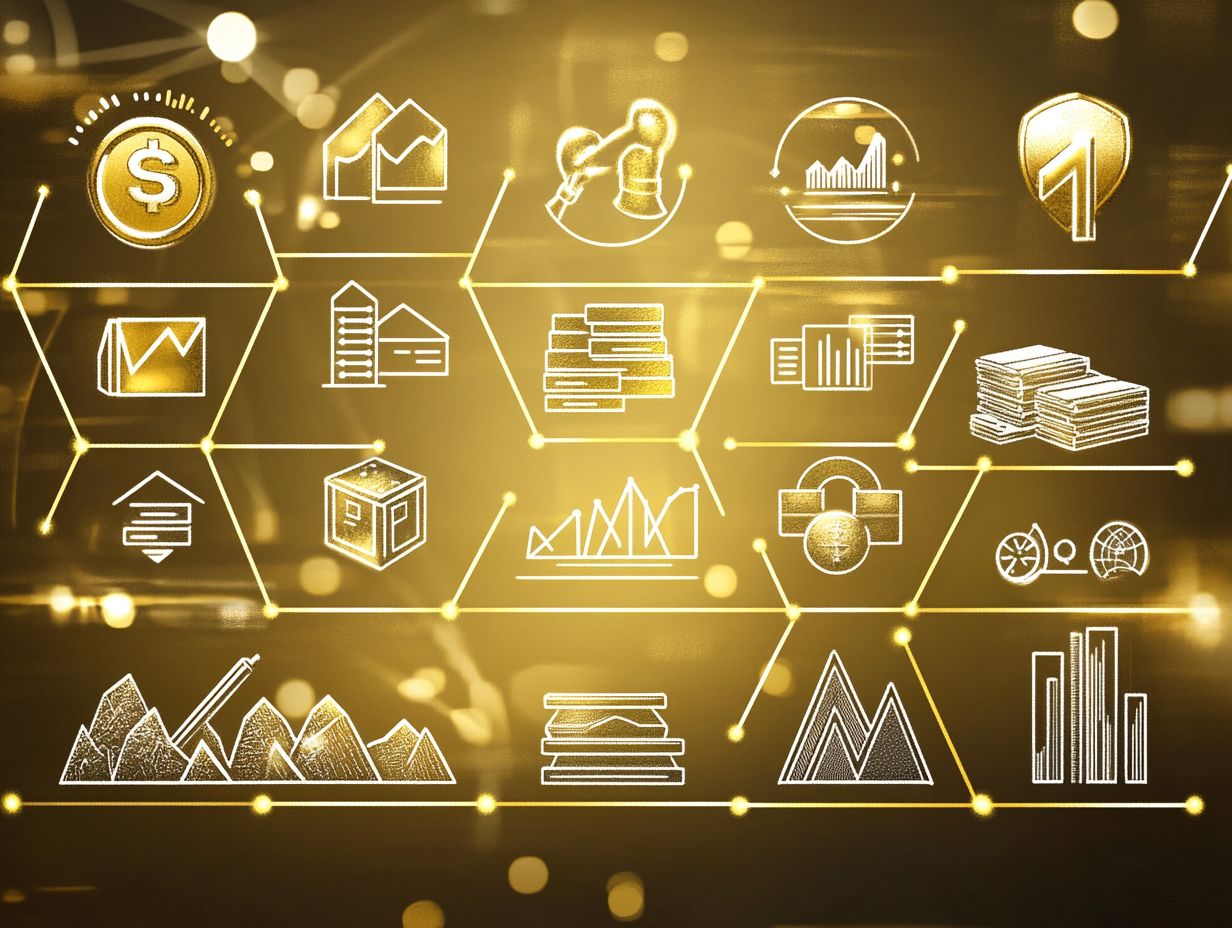
- Supply and demand are key factors. Increased demand and limited supply drive prices up.
- Economic and political factors like inflation and interest rates impact precious metals’ value.
- Global events and market speculation create volatility, making it vital for investors to stay informed.
1. Supply and Demand
Supply and demand shape silver prices in the precious metals market. Fluctuations caused by mining production, government policies, and market sentiment greatly affect investor behavior.
Industries rely on silver for traditional uses and emerging technologies like solar panels and electric vehicles. This creates a strong link between supply chains and market demand.
Mining production faces challenges from geopolitical issues and environmental regulations, resulting in unpredictable silver availability. Silver scrap recycling also plays a crucial role, providing a secondary source when mining outputs dip.
As investor sentiment shifts based on global financial trends, these factors collectively drive price fluctuations. The silver market can be particularly volatile.
2. Economic and Political Factors
Economic and political elements, such as government policies and geopolitical tensions, greatly influence the precious metals market. These often lead to significant fluctuations in silver prices.
For example, during global uncertainty, demand for silver can surge as it is seen as a safe haven asset. Central banks react to these events by adjusting monetary policies, which affects inflation rates and investor sentiment.
The decisions made by central banks, including interest rate changes, shift demand for silver. This illustrates the balance between economic health and investment behavior.
These connections show how external events and institutional decisions guide silver prices.
3. Interest Rates and Inflation
Interest rates and inflation are vital indicators that impact silver prices. When interest rates rise, borrowing costs increase, influencing investment trends and consumer spending.
As interest rates climb, the appeal of non-yielding assets like silver diminishes. Conversely, during rising inflation, many individuals seek refuge in precious metals to protect against decreasing purchasing power.
Economic forecasts complicate this landscape. Predictions of long-term inflation can raise demand for silver, even as high borrowing costs may temper it.
Other metals, such as gold and platinum, face similar pressures. Investors carefully consider their roles as protective assets during uncertain economic conditions.
4. Currency Exchange Rates
Currency exchange rates significantly influence the silver spot price. They shape market volatility and affect your purchasing power in the global precious metals market.
When currencies strengthen or weaken, silver can become either a more or less appealing investment compared to other assets like stocks and bonds. If your currency depreciates, you might look to silver as a hedge against inflation or economic uncertainty.
International silver trading is heavily impacted by fluctuations in exchange rates. These changes can alter the costs involved in importing and exporting the metal. Major trading hubs like the New York Mercantile Exchange serve as crucial platforms where these dynamics unfold. You can adjust your trading strategies in response to currency shifts and broader market conditions.
5. Geopolitical Tensions
Geopolitical tensions greatly affect investor behavior. During uncertain times, many seek silver as a safe-haven asset.
Historical events like wars and economic sanctions have shown how crises can drive investors toward precious metals like silver. Its value typically increases when stability diminishes. For example, during the Cold War, fears of conflict led many to embrace silver, raising its price.
The industrial demand for silver also rises during political crises. As nations aim to boost their production capabilities, the need for silver in electronics and renewable energy technologies increases. This connection between geopolitical dynamics and silver’s market presence is profound.
6. Market Speculation
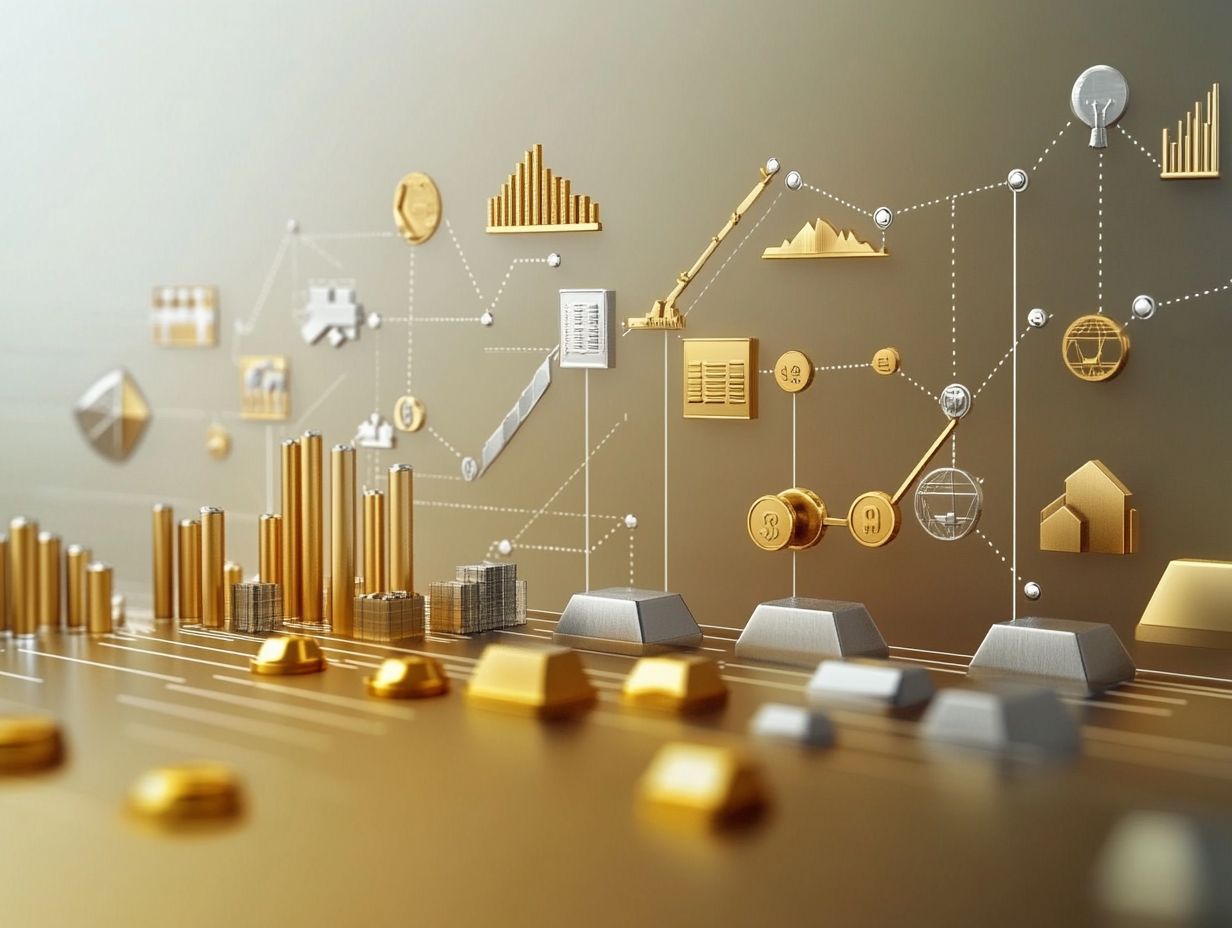
Market speculation plays an important role in the price fluctuations of the silver market. Your sentiment as an investor can swiftly shift based on news, trends, and economic indicators.
This creates both opportunities and risks for you as a trader or investor. Speculative traders often react quickly to short-term trends, eager to seize immediate price movements. Meanwhile, those with a more strategic mindset focus on long-term investment strategies, considering broader economic shifts.
The psychological aspects of trading are critical. Fear and greed can heavily influence your decisions, leading to panic selling or exuberant buying. This can intensify market volatility.
Recognizing these emotional drivers is essential for anyone navigating the silver market. They significantly shape investor behavior and influence overall market dynamics.
7. Industrial Demand
Industrial demand for silver, driven by technological advancements in sectors like electronics and renewable energy, has become an important factor in shaping silver prices.
In the electronics industry, particularly with 5G technology and the Internet of Things (IoT), there is a significant uptick in silver utilization due to its exceptional conductive properties. Renewable energy solutions, including solar and wind, also rely on substantial silver content, boosting the shift toward sustainable energy.
As these sectors innovate, they elevate silver demand and influence your investment strategies regarding silver holdings. You may align your portfolio with anticipated growth in these industries, recognizing the intricate connection between rising industrial demand and the long-term value trajectory of this precious metal.
8. Central Bank Policies
Central bank policies, especially those governing monetary policy, are crucial in shaping economic health. They directly influence silver prices. Changes in interest rates and inflation expectations significantly impact how investors perceive precious metals.
When central banks lower interest rates to spur growth, it often leads to a depreciation of the national currency. This scenario makes silver and other commodities more appealing as a hedge against inflation. For example, the Federal Reserve s dovish approach to rate hikes has prompted a notable increase in silver prices. Investors gravitate toward tangible assets amidst concerns about rising inflation.
A proactive response from central banks during economic downturns enhances market liquidity, which is the ease of buying and selling assets. This, in turn, fuels interest in precious metals among both portfolio managers and individual investors.
9. Technological Advancements
Technological advancements have reshaped the demand for silver and revolutionized the methods for extraction and recycling of silver scrap. This shift fuels new investment trends that emphasize environmental sustainability and responsible sourcing practices within the precious metals market.
As innovations in battery technology gain momentum particularly with electric vehicles and renewable energy storage the value of silver is being redefined. The rising demand for materials that conduct electricity well enhances silver’s significance, prompting you to reassess its vital role in the landscape of modern technology.
Sustainable mining practices are gaining traction, altering how you view the silver market. By prioritizing ethical sourcing and minimizing environmental impacts, companies cultivate greater trust and accountability. This reshapes market dynamics and drives long-term growth in the sector. You have compelling reasons to consider your investment strategies.
10. Seasonal Demand
Seasonal demand in the jewelry market significantly impacts silver prices, as your spending patterns change with trends, holidays, and cultural events. These fluctuations create peaks that can influence market dynamics and investor behavior.
During festive seasons like Diwali or Christmas, the heightened interest in consumer spending often leads to a surge in demand for silver jewelry, causing prices to climb. Historical data shows that during these peak periods, silver prices can increase by as much as 15% compared to off-peak months.
The rising appeal of ethical and sustainable jewelry has shifted preferences toward sterling silver, amplifying demand further. By understanding these patterns, you can seize the chance to anticipate price movements and adopt a more strategic approach to buying and selling in the silver market.
How Do Precious Metals Prices Compare to Other Investments?
Analyzing how precious metal prices, such as silver and gold, stack up against other investment vehicles unveils unique market dynamics that can shape your choices, especially during economic downturns and periods of market turbulence.
Historically, both silver and gold have proven to be resilient in fluctuating economic conditions. When inflation rises or geopolitical tensions flare, investors flock to these metals as safe havens, eager to preserve their wealth.
In the past decade, trends have surfaced in the precious metals market, with silver often showcasing greater volatility compared to gold. This volatility can be enticing if you have a higher risk tolerance and seek the potential for greater returns.
Factors such as shifts in supply and demand, the industrial applications of silver, and the overall economic landscape frequently dictate how these metals perform in relation to each other and other investment options.
What Are the Different Types of Precious Metals?
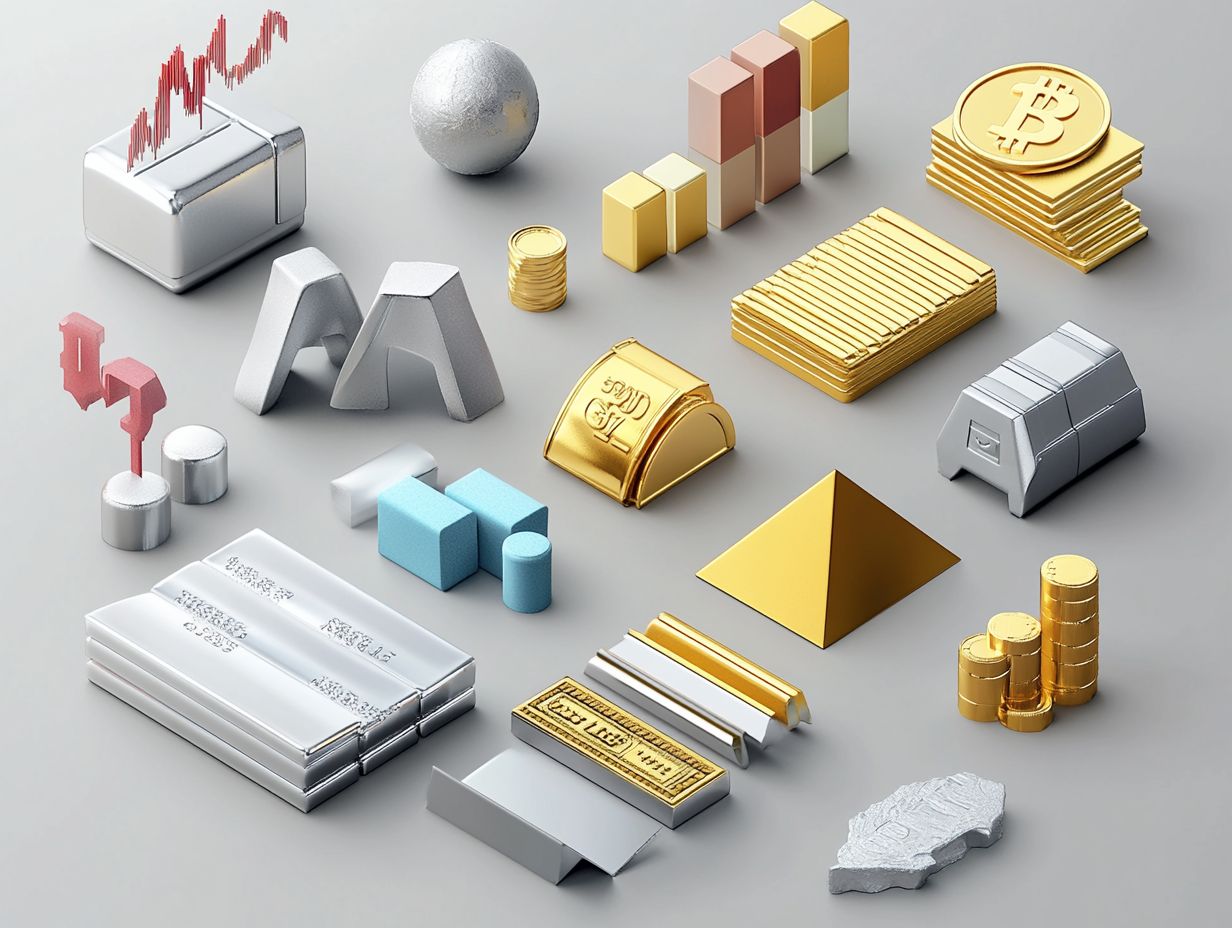
Precious metals silver, gold, platinum, and palladium each boast distinct properties and market behaviors. These characteristics make them ideal for various investment strategies and applications across numerous industries.
Gold, for instance, is often viewed as a safe haven during economic uncertainty. This attracts investors who seek stability and security.
In contrast, silver functions not only as a form of currency but also as a vital component in many industrial applications, especially in electronics and solar energy.
Platinum, renowned for its rarity, finds extensive use in catalytic converters and jewelry. Palladium has surged in popularity within the automotive sector due to its catalytic capabilities.
Each of these metals reflects different market demands and investment potential. They are shaped by factors like technological advancements and geopolitical shifts, establishing their roles as both diverse and critical in the investment landscape.
How Can Investors Predict and Track Precious Metals Prices?
You can predict and track precious metals prices, including the silver spot price, by analyzing market indicators, economic forecasts, and trends in supply and demand. These elements provide valuable insights into potential price movements.
Using methods investors use to analyze price trends such as moving averages and relative strength indexes allows you to gauge market momentum effectively. Comprehensive market reports keep you informed about inventory levels and geopolitical events that may impact supply.
It s crucial to monitor economic indicators like inflation rates and currency strength. These factors often drive the value of precious metals.
By applying these methodologies, you can make well-informed decisions that align with market dynamics. This enhances your ability to seize opportunities and mitigate risks within your investment portfolio.
What Are the Risks and Benefits of Investing in Precious Metals?
Investing in precious metals presents a landscape rich with both risks and rewards. Market volatility and shifts in investor sentiment can impact the value of assets like silver and gold.
However, these metals also serve as a robust hedge against inflation and economic downturns. When weighing the advantages, you might discover that incorporating precious metals into your investment portfolio enhances diversification.
This ultimately reduces your overall risk. In times of economic uncertainty, these assets often maintain their value more effectively than traditional stocks or bonds.
It’s essential to remain vigilant about potential downsides, such as unpredictable price swings and the effects of market speculation. These factors can cause sudden fluctuations in asset worth.
By carefully balancing these elements, you can make informed decisions about weaving these tangible commodities into your investment strategy.
How Can Global Events Impact Precious Metals Prices?
Global events significantly influence precious metals prices, including silver. Economic health, geopolitical tensions, and market sentiment can lead to sudden demand and value fluctuations.
When economic instability arises, investors often flock to safe-haven assets like silver, leading to a notable surge in prices. Similarly, geopolitical conflicts can disrupt supply chains, introducing uncertainty that brings the spotlight back to this precious metal.
Changes in government policies such as tariffs or trade agreements can directly affect silver mining and distribution. These changes further shape market dynamics.
Your behavior as an investor is influenced by prevailing market sentiments. These sentiments reflect fear or optimism, which drives the demand for silver as a hedge or an investment choice, respectively.
How Can Investors Mitigate Risks When Investing in Precious Metals?
You can mitigate risks in precious metals investing by using various strategies. Start by spreading your investments, performing market analysis, and keeping an eye on economic indicators that affect silver and gold prices.
Consider using exchange-traded funds (ETFs) focused on precious metals. These funds let you invest conveniently while diversifying your risk across many assets.
Diversify your portfolio beyond just gold and silver. Including mining stocks or industrial metals can provide a cushion against market downturns.
Regularly review market conditions, such as interest rates and geopolitical developments. This keeps you informed and ready to adjust your strategies swiftly.
Frequently Asked Questions
What are the main factors that influence precious metals prices?
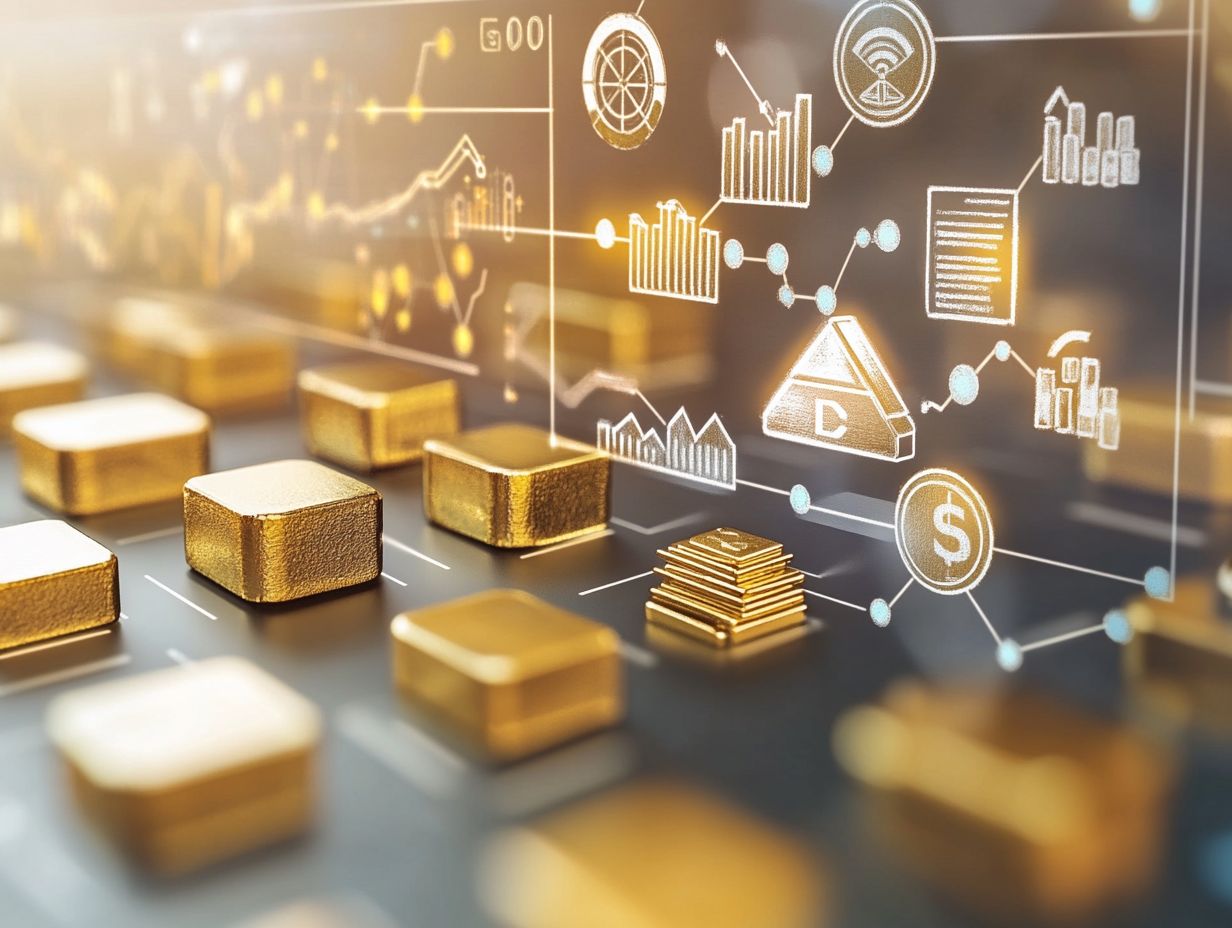
Ten key factors significantly impact precious metals prices: supply and demand, inflation, economic stability, geopolitical events, currency fluctuations, interest rates, mining production, industrial demand, speculator activity, and central bank policies.
How does supply and demand affect precious metals prices?
Precious metals follow the basic law of supply and demand. When demand rises or supply drops, prices usually increase. When demand falls or supply rises, prices tend to drop.
How does inflation impact precious metals prices?
Inflation drives precious metals prices. High inflation leads investors to buy precious metals as a safe store of value, pushing prices up. When inflation is low, demand may decrease, which can lower prices.
What role do economic stability and geopolitical events play in precious metals prices?
Economic stability and geopolitical events like wars or political turmoil can greatly affect precious metals prices. These situations cause market uncertainty, prompting investors to flock to precious metals for safety, which increases prices.
How do currency fluctuations affect precious metals prices?
Precious metals are traded in US dollars. When the dollar’s value falls, you need more dollars to buy the same amount of metals, raising prices. A stronger dollar can lead to lower prices.
What role do interest rates play in the prices of precious metals?
Interest rates significantly impact precious metals prices. Low rates make precious metals more appealing, driving prices up. High rates may reduce demand, causing prices to fall.










